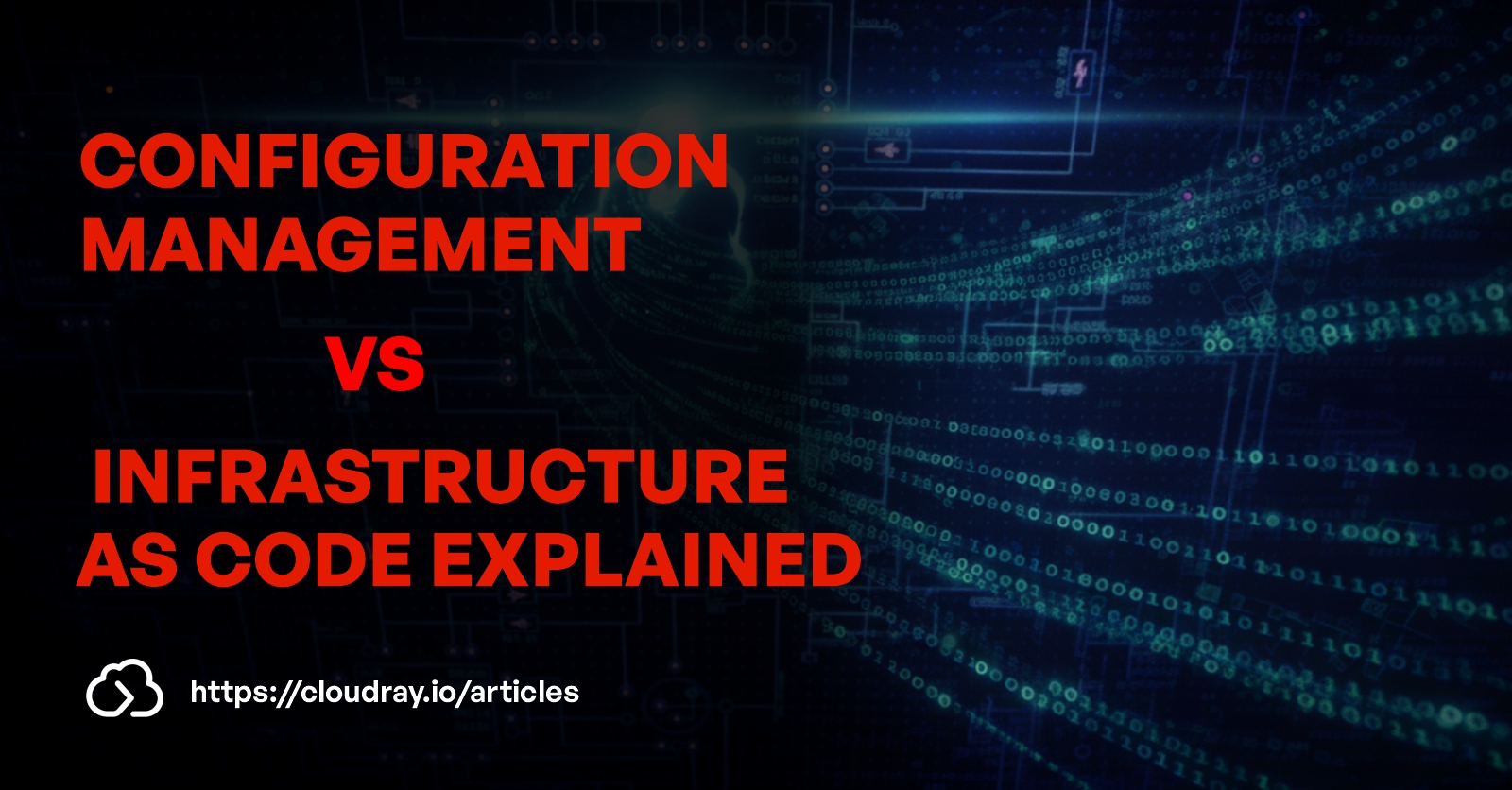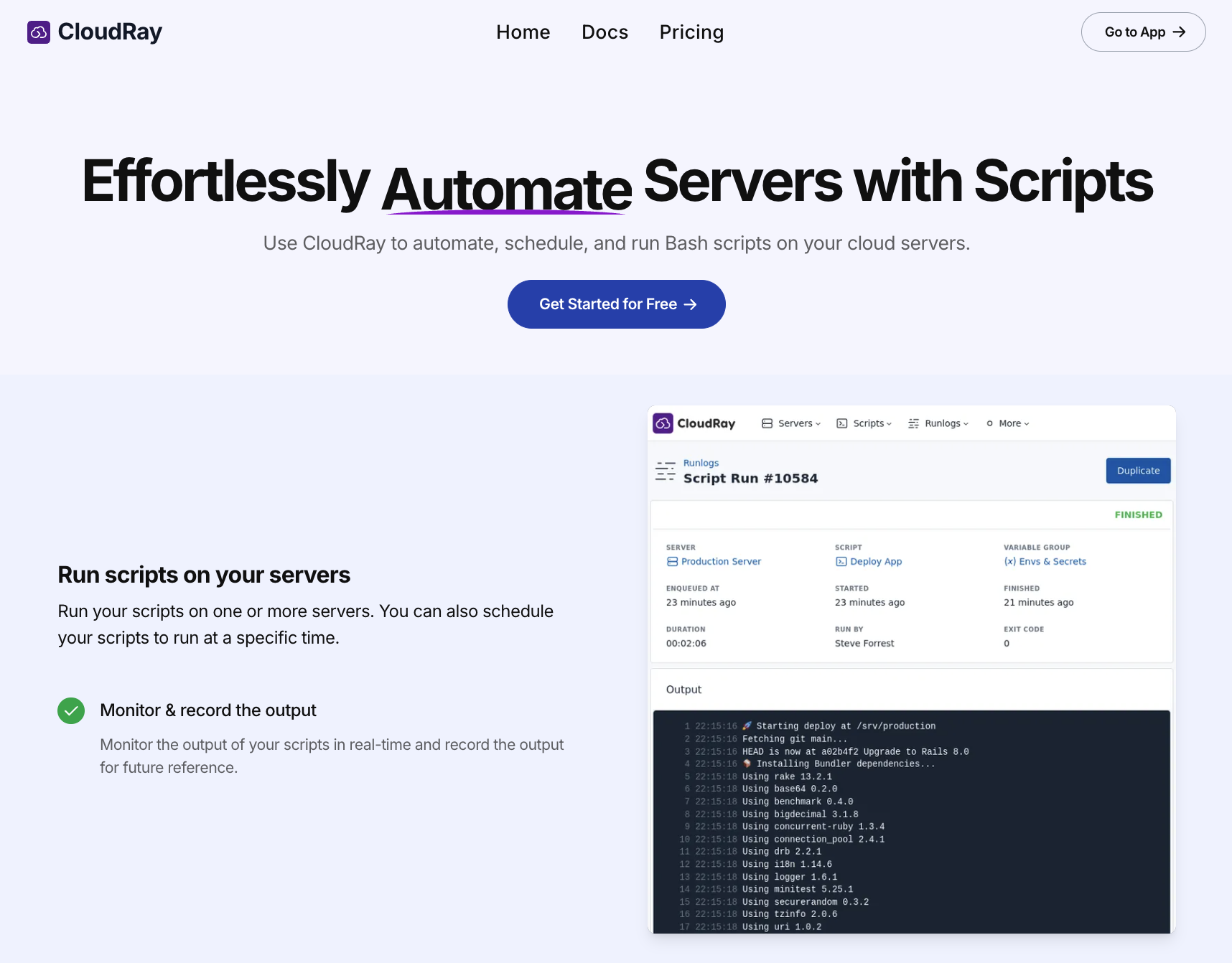Configuration Management vs Infrastructure as Code Explained

Managing IT infrastructure and applications is hard, especially as things scale. Two practices that help make it easier are Configuration Management (CM) and Infrastructure as Code (IaC). While they’re similar, they serve different purposes in IT ops and DevOps.
Configuration Management enforces system states automatically, while Infrastructure as Code treats infrastructure like software development. Knowing when to use each will save your team a ton of time and reduce operational complexity.
In this post we’ll go into both, the practical differences and how to choose the right one for your infrastructure.
Contents
- What is Configuration Management?
- What is Infrastructure as Code (IaC)?
- Differences Between IaC and Configuration Management
- When to Use Each Approach
- The Middle Ground: Centralised Script Management
What is Configuration Management?
Configuration Management is the practice of managing changes to a system so it stays consistent and doesn’t drift over time. It ensures servers, applications and infrastructure components stay in the desired state, automatically correcting any deviations that occur from manual changes, software updates or system failures.
Think of Configuration Management as a blueprint enforcement system. When you define how a web server should be configured, which packages are installed, what services are running, and how security is applied. CM tools monitor and enforce those specifications across all your servers.
For example, imagine you have 50 web servers that should all run the same version of Apache with the same security configuration. Without Configuration Management, updating all servers when you need to change the SSL certificate or apply a security patch is a time-consuming and error-prone process. With Configuration Management you update the configuration once and the system applies the changes across all servers.
Popular Configuration Management tools are Puppet, Chef, Ansible and SaltStack. These platforms use different approaches, Puppet uses a declarative language, Chef uses Ruby based “recipes” while Ansible uses simple YAML playbooks that don’t require agents on target machines. Some teams prefer simpler approaches using standard scripting languages, and choosing the scripting language for automation tasks often depends on your team’s expertise and infrastructure requirements.
The core principle remains the same across all tools which is define the desired state once and let the system maintain that state across your entire infrastructure.
Benefits of Configuration Management
Configuration Management offers several key benefits:
- Consistency Across Environments
Configuration Management gets rid of the “works on my machine” problem by ensuring the same configuration across dev, staging and production environments. When configurations are defined as code and enforced automatically, you can be sure your production environment matches your testing environment exactly.
- Reduced Configuration Drift
Systems drift from their intended state over time due to manual changes, security patches or application updates. Configuration Management monitors and corrects these deviations automatically, no human intervention required.
- Faster Recovery and Scaling
When servers fail or you need to provision new infrastructure, Configuration Management allows you to deploy properly configured systems in minutes. Instead of setting up each server manually, you can spin up new instances that configure themselves according to your specs.
- Audit Trail and Compliance
Every configuration change is tracked and versioned, so you can see what changed, when and who changed it. This audit capability is key for compliance and troubleshooting config issues.
- Reduced Human Error
Manual config processes are error prone - typos, missed steps or inconsistent implementations. Automated config enforcement eliminates these human errors, so you get more reliable and predictable infrastructure.
What is Infrastructure as Code (IaC)?
Infrastructure as Code (IaC) is the practice of managing and provisioning your computing infrastructure through code instead of physical hardware configuration or interactive configuration tools. Instead of setting up servers, networks and storage through web consoles or command line interfaces, you write code that describes your entire infrastructure architecture.
IaC treats infrastructure like software development. You write code, version control it, test it and deploy it using automated processes. The infrastructure definitions are stored as text files that can be shared, reviewed and modified just like application code.
Consider this example, instead of logging into AWS console to manually create 10 virtual machines, configure load balancers, set up databases and establish networking rules, you write a single configuration file that describes all these resources. When you run this file through an IaC tool, it creates your entire infrastructure stack in minutes.
Leading IaC tools are Terraform, AWS CloudFormation, Azure Resource Manager and Google Cloud Deployment Manager. Terraform uses HashiCorp Configuration Language (HCL) to define infrastructure across multiple cloud providers, while cloud specific tools like CloudFormation use JSON or YAML templates to provision resources within their respective platforms.
The key difference from Configuration Management is the scope. While Configuration Management is about configuring existing systems, IaC is about creating, modifying and destroying the infrastructure itself.
Benefits of Infrastructure as Code
IaC gives you operational benefits that go beyond automation. These are especially valuable for companies managing complex infrastructure across multiple environments at scale.
- Version Control and Collaboration
Infrastructure code can be stored in version control systems like Git, so teams can track changes, collaborate on infrastructure changes and roll back to previous versions when things go wrong. It brings software development best practices to infrastructure management, code reviews and change approval for infrastructure changes.
- Reproducible Environments
IaC lets you spin up identical environments on demand. Whether you need to replicate production for testing, create disaster recovery environments or spin up temporary development instances, the same code produces the same results every time, no environment specific bugs and configuration drift.
- Cost Management and Resource Optimisation
With IaC you can tear down and recreate environments when they’re not needed, reducing cloud costs. Development and testing environments can be destroyed at night and recreated in the morning, production environments get consistent resource allocation and optimisation.
- Faster Deployment and Scaling
Infrastructure that took days or weeks to provision can be done in minutes through automated deployment pipelines. As business requirements change, scaling infrastructure up or down is as simple as modifying a few parameters in your infrastructure code and redeploy.
- Documentation and Knowledge Sharing
Your infrastructure code is living documentation of your system architecture. New team members can understand the infrastructure design by reading the code and institutional knowledge is preserved when team members leave the company.
Differences Between IaC and Configuration Management
While Configuration Management and Infrastructure as Code both automate infrastructure operations, they are very different in scope, timing and implementation. Understanding the differences helps you choose the right tool for the job.
- Scope and Purpose
Configuration Management is about maintaining and configuring existing infrastructure. It keeps servers that already exist in their desired state, managing software installations, service configurations and system settings. IaC is about creating and destroying infrastructure resources themselves - virtual machines, networks, storage and cloud services.
- Implementation Timing
Configuration Management runs continuously after infrastructure is provisioned. It monitors systems and applies corrections when configurations drift from desired states. IaC runs during specific deployment events - when you need to create new environments, scale resources or modify infrastructure architecture.
- State Management
Configuration Management uses agents or agentless connections to check current system states against desired configurations. It remediates differences automatically and continuously. IaC tools maintain state files that track which resources exist and their current configuration, and only make changes when you explicitly run deployment commands.
- Learning Curve and Complexity
Configuration Management often requires learning domain-specific languages or complex frameworks. Teams need to understand concepts like manifests, playbooks or recipes. IaC tools use more familiar formats like JSON, YAML or simple declarative languages but require understanding of infrastructure architecture and cloud service relationships.
- Use Case Overlap
Some scenarios blur the lines between these approaches. Tools like Terraform can provision infrastructure and do basic configuration, while Ansible can manage both infrastructure provisioning and ongoing configuration management, so modern tools are increasingly combining both capabilities.
When to Use Each Approach
Choosing between Configuration Management and Infrastructure as Code depends on your infrastructure challenges, team capabilities and operational requirements. Each approach is good for different scenarios and organisational contexts.
Use Configuration Management When:
You have existing infrastructure that needs to be maintained and configured. Configuration Management is good at managing long running servers, applying security patches consistently and maintaining compliance across distributed systems. It’s particularly useful for teams managing traditional server environments, hybrid cloud setups or infrastructure where manual configuration changes happen frequently.
Teams with limited cloud expertise but strong sysadmin skills often find Configuration Management more approachable. If your infrastructure doesn’t change often but needs ongoing maintenance, Configuration Management provides continuous oversight without the complexity of full infrastructure provisioning workflows.
Use Infrastructure as Code When:
Your infrastructure changes frequently or you need to create and destroy environments regularly. IaC is good in cloud native environments where resources are treated as disposable and environments are created on demand. It’s essential for teams doing continuous delivery, managing multiple staging environments or operating in rapidly scaling organisations.
Organisations prioritising disaster recovery, cost optimisation through environment automation or teams that need to replicate infrastructure across different cloud providers benefit from IaC approaches. The ability to version control infrastructure changes and apply software development practices to infrastructure management makes IaC particularly useful for DevOps mature organisations.
The Hybrid Reality:
Many teams use both approaches, IaC for infrastructure provisioning and Configuration Management for system maintenance. Others find success with simpler approaches, especially when starting their automation journey. Simple script automation can provide immediate value for teams not ready for complex frameworks, allowing gradual progression to more advanced infrastructure management practices.
The Middle Ground: Centralised Script Management
Between full Infrastructure as Code and traditional Configuration Management lies a middle ground, a centralised script management. This approach combines the simplicity of shell scripts with central control and monitoring.
Many teams start with scattered bash scripts across different servers, managed individually through cron jobs or manual execution. While these scripts solve immediate problems, they become hard to manage and monitor as infrastructure grows. Centralised script management solves these problems without requiring teams to learn complex frameworks or rewrite existing automation logic.

CloudRay provides a centralised platform for bash script automation across cloud and server infrastructure. Through the CloudRay Agent, teams can connect their instances and servers securely and execute scripts in real-time from a single control panel. The Schedules feature automates script execution at custom intervals—hourly, daily or event triggered—so you can have reliable DevOps workflows without manual intervention.
This is a quick win for teams not ready for complex frameworks and a clear path to more advanced infrastructure management as you grow.
Written by Olusegun Durojaye
CloudRay Team